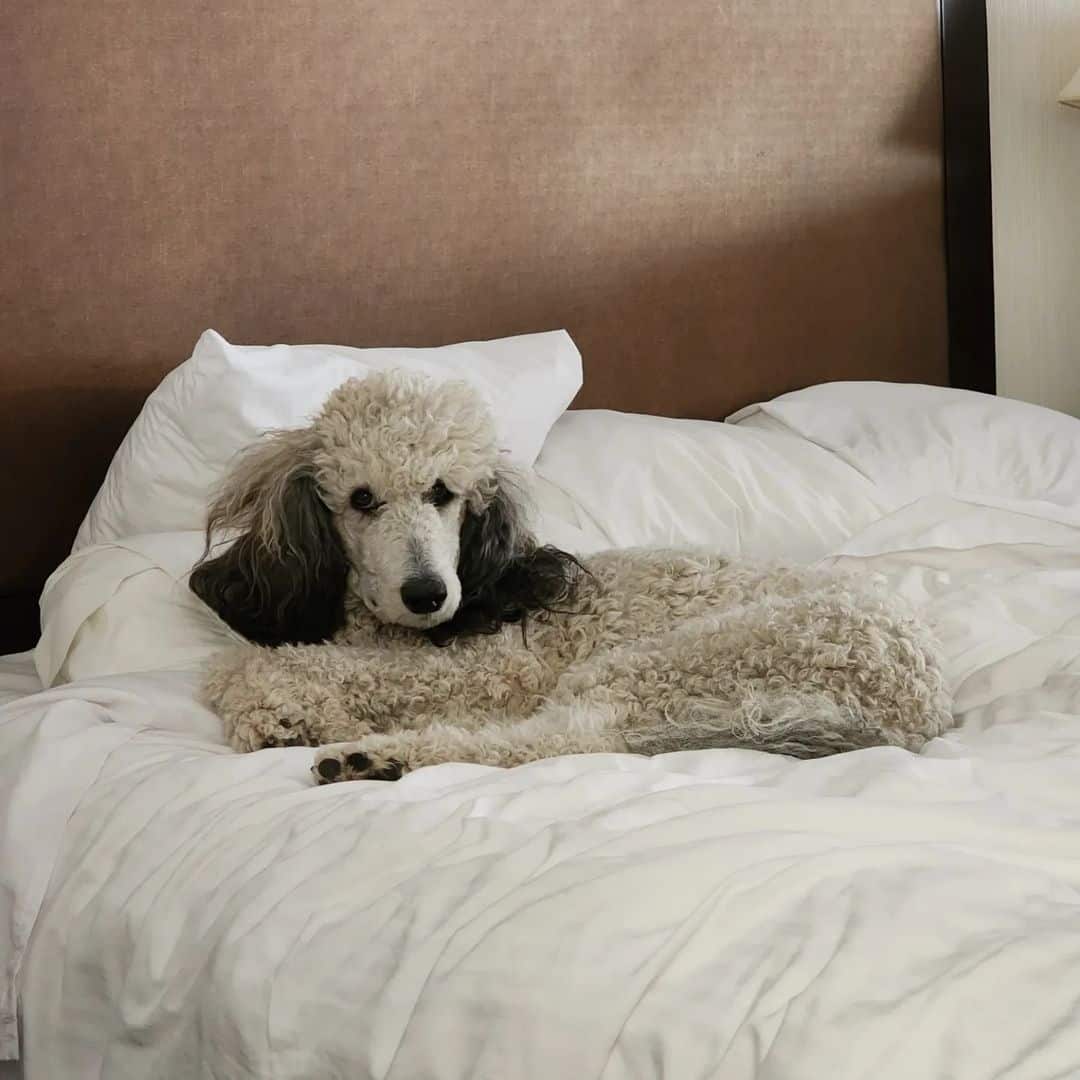How often do you get a chance to see a Sable Poodle? These canines are probably one of the rarest Poodle types of all as this color pattern doesn’t qualify among the standard Poodle colors.
The American Kennel Club does not recognize the sable pattern in Poodle puppies, which does not give these canines as much credibility in comparison to other Poodle puppies.
Still, the sable color doesn’t necessarily represent a pattern as it can appear in many other solid-color variants.
There is a huge dilemma on whether sable represents an exact color or the characteristic that makes the tip of a Poodle’s coat black.
Throughout this article, we will try to decode that enigma, as well as see what it is like to have this gorgeous, sable canine in your family. Let’s take a ride!
What Is A Sable Poodle?
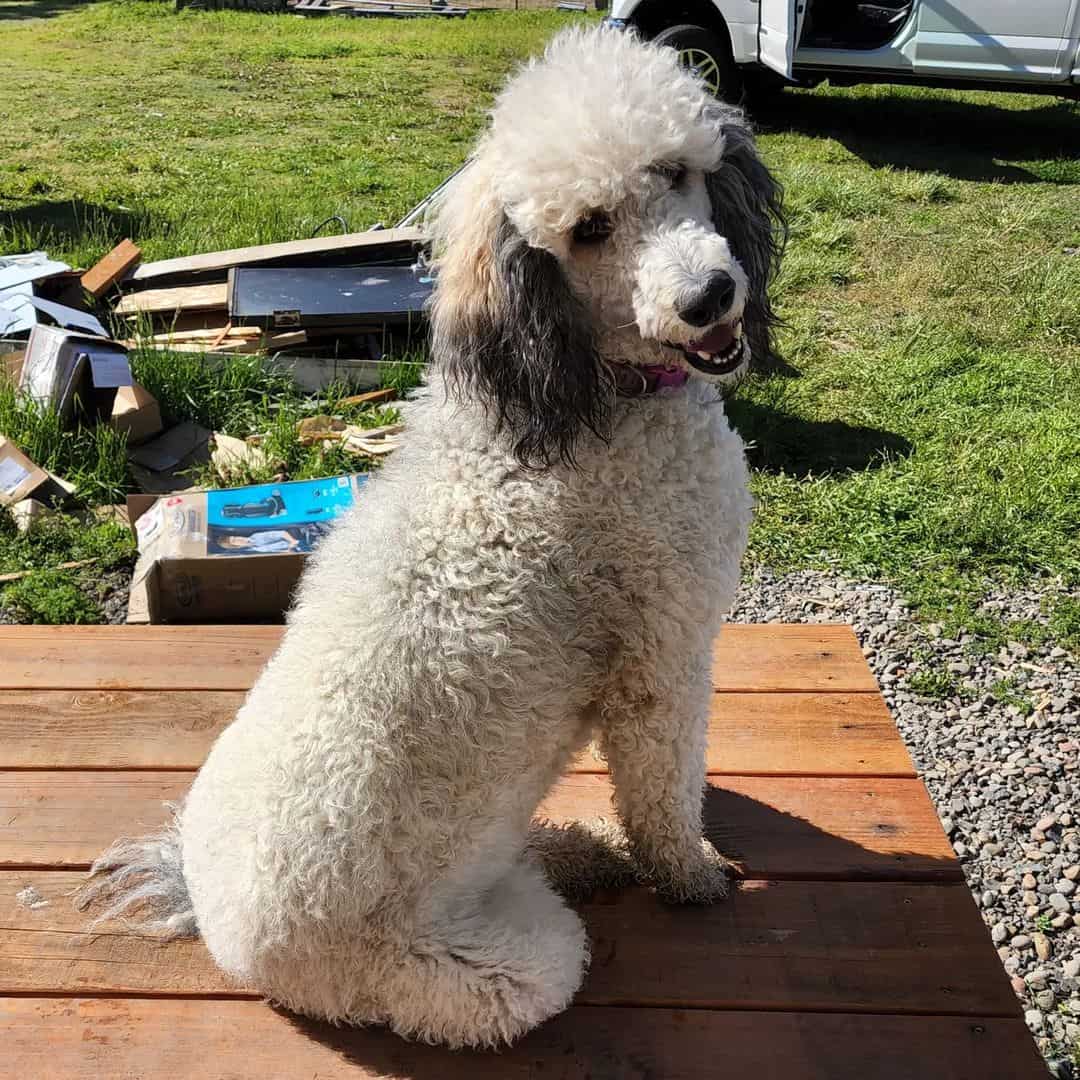
The easiest way to identify the Sable Poodle is to say that this is a standard Poodle puppy with an unusual sable pattern in its coat. Sable does not necessarily represent an exact color as it appears in many other color variants such as dark brown, brindle, agouti, phantom, recessive black, or even silver beige.
You can see how the sable pattern actually transitions based on the base color in a puppy. It doesn’t get immediately black, but it gradually becomes sable. Unlike brown, or brindle that come from a recessive gene, the sable pattern originates from a dominant gene in most puppies.
Even though this canine is not AKC recognized, the sable puppy is quite popular both in the United States and in Europe. Still, this color pattern is rare at reputable breeders as most of the Poodles bred in these kennels are members of the American Kennel Club.
It is much easier to find this dog in its standard colors, which are apricot, cafe au lait, gray and white, cream, red, silver, silver beige, black, blue, and brown. Aside from these standard colors, Poodle puppies also come in several other variants such as brindle parti, tuxedo, brindle Poodles (with a striped pattern), and parti Poodles.
The Origins Of A Sable Poodle
It is unknown how these gorgeous canines came to life for the first time, but one thing is for sure – sable puppies have been in the Poodle family for a very long time. They are not different from other Poodles in temperament, coat type, size, or health.
Poodle puppies qualify among the healthiest dogs in the world, which also stands for the sable Poodle as well.
Practically, the only thing that disqualifies them from being full members of the American Kennel Club is their sable pattern. Sable Poodle puppies, unlike white or black Poodles, have a unique pigment that usually appears throughout the black tips on the original Poodle coat.
Generally, the sable part of a puppy comes in a colored part of the coat… not in white areas. This goes for an adult sable dog as puppies may appear darker during the first several weeks.
This is due to the fact that their first hair may be those black tips that make the sable pattern visible. As they grow, they become brighter, which can seem as if they fade. This so-called lightening is a common color change for all puppies with a sable characteristic.
Physical Appearance
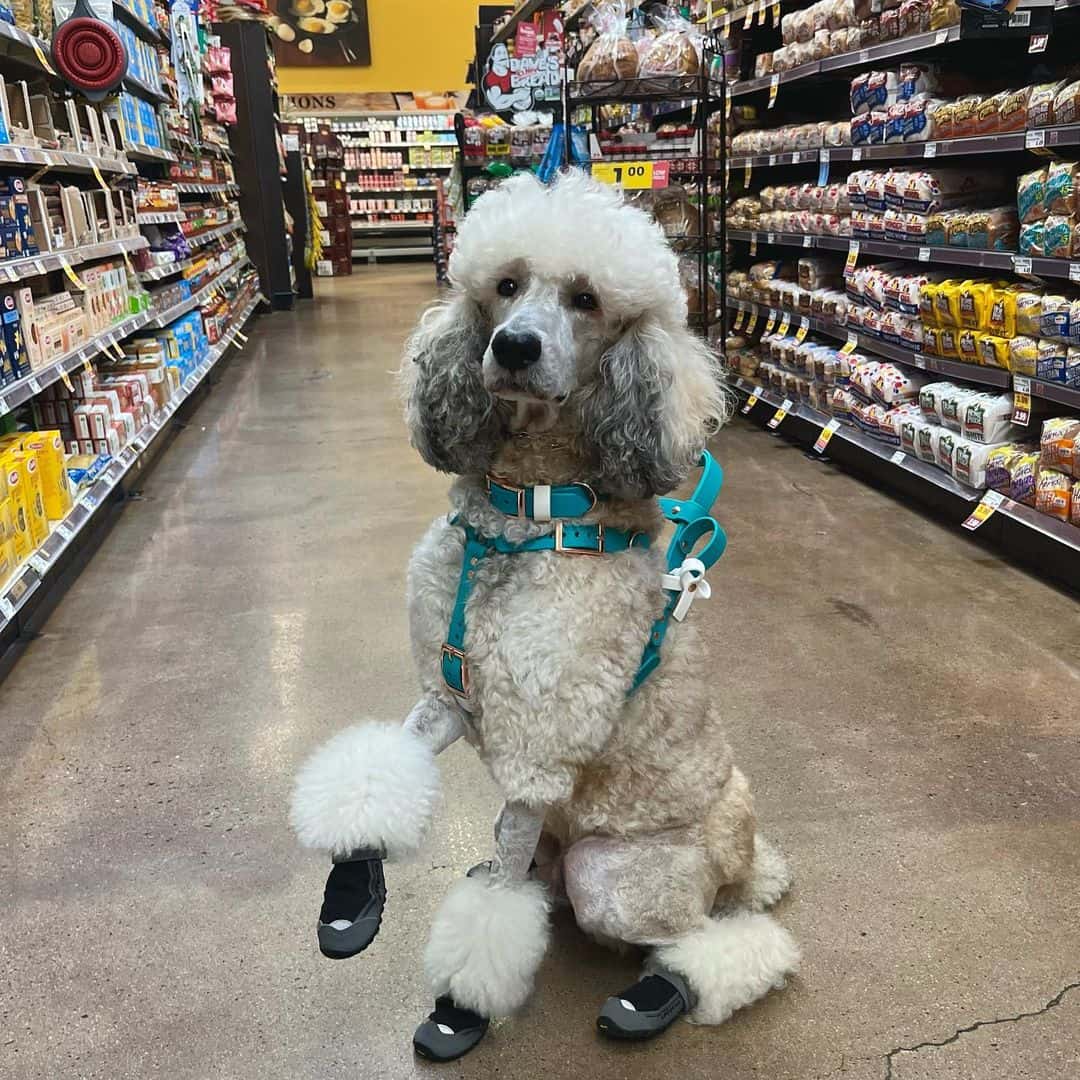
Speaking of a Poodle’s physical appearance is always a pleasure as these canines are probably one of the most fashionable dogs in the world. They are known for their magnificent, hypoallergenic coat that comes in many grooming styles.
Poodle haircuts are one of the things that sell Poodle puppies the most as these canines have great potential for a fashionable look. In fact, you can see numerous Poodle canines competing in dog shows all over the world.
Typically, standard canines have a long muzzle, with a black nose and long, floppy ears. Even though it doesn’t show at first – these canines are extremely athletic and strong. They are not as protective as Doberman puppies or GSDs, but Poodle dogs are eager to protect their family, too.
Depending on the size, these canines come as toy, miniature, and standard versions. All three are recognized by the American Kennel Club.
How Big Do These Canines Get
There is no universal answer to this question as these puppies come in three different size variants: toy, miniature, and standard. In fact, we can find these canines in a giant form, but they don’t make the breed separate as giant puppies qualify among standard Poodles as well.
All three were recognized by the American Kennel Club in 1887, which makes this breed one of the oldest members of the AKC family.
Typically, standard puppies stand over 15 inches in height, and they weigh 60 to 70 pounds.
Furthermore, miniature puppies are 10 to 15 inches tall, with a weight of 10 to 15 pounds. The smallest ones weigh no more than 6 pounds, and their average height doesn’t exceed 10 inches.
The size doesn’t necessarily affect this puppy’s character as all three share the same family traits, as well as the same fashionable look. It’s really up to the future owner to decide which of these three suits him/her the most.
Still, you need to bear in mind that toy puppies need a more rigid feeding chart as their activity level is not as high as in standard puppies. They tend to gain weight easily, which makes them prone to obesity.
Other Coat Colors Of A Poodle Puppy
All standard, miniature, and toy Poodle puppies have the same AKC-recognized standard colors, which are apricot, black, white, cafe au lait, silver, silver beige, red, gray, brown, blue, and cream.
These are the specific patterns that you can find at reputable breeders almost all the time. However, there are more than 35 colors of Poodle puppies in which you can find this fashionable dog.
They generally come in solid colors, but parti-colored puppies with a small amount of white on their chest and dark tips on their coat are quite common, too.
These canines usually have long, curly hair that has a hypoallergenic character. That’s why this breed is favorable among people with dog allergies. The breed doesn’t shed that often, which is why they are also favorable for having indoors.
When it comes to grooming, these canines require brushing every five to eight weeks. Unlike many other dogs, they are not demanding in this regard.
Still, many Poodle owners subject their puppies to professional groomers as their hair is favorable for fashionable grooming styles.
It is not rare to see these puppies competing in various AKC shows as they are true models, and they have a smooth, balanced movement.
Sable Poodle: Temperament
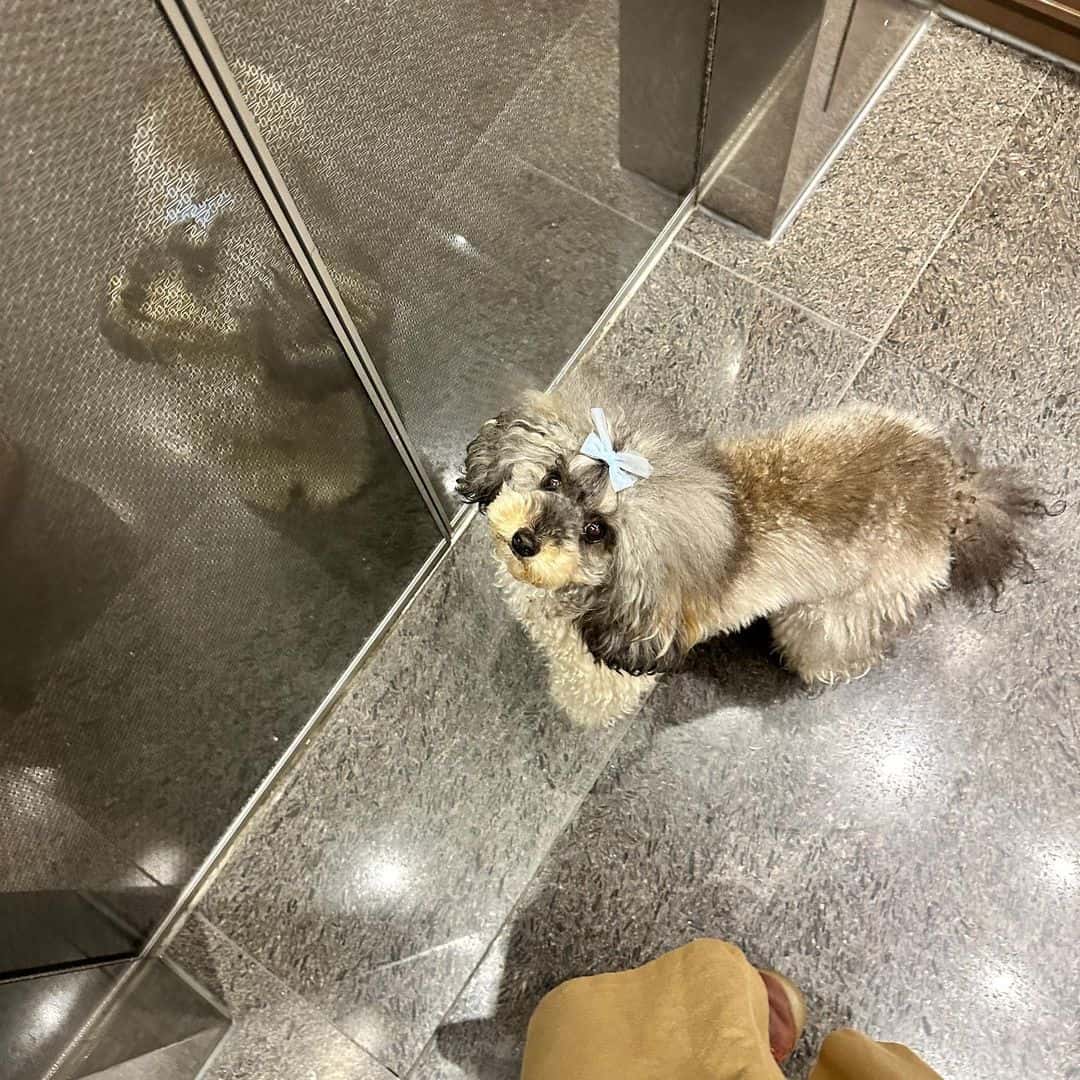
If you’re interested in buying a Poodle for companionship purposes, you’re definitely on the right track!
The temperament of these puppies is just wonderful. Not only are they one of the smartest dogs in the world, but the breed itself is highly affectionate and loyal to their owner.
These canines are perfect for big families, and the breed is also recommended to have around small children.
The dog makes an excellent therapist, as well as a nanny. They have a high level of tolerance, which means that they don’t mind being occasionally climbed on by a small kid, or being pulled by their tail.
These dogs will accompany you in various activities as they enjoy long walks, frolicking in a park, or a quiet afternoon being lazy in a house.
At times, the breed can display aggressive behavior, especially if they feel threatened by predators or strangers. This is their natural behavior as they try to protect their home and family.
Still, socialized puppies are not likely to have these outbursts as they are calm and easy-going. However, the breed doesn’t like solitude, so the recommendation is not to leave this puppy alone for more than several hours a day.
They are known for suffering from severe separation anxiety when they are alone, which can trigger self-destructive behavior.
Housing And Social Skills
This breed is definitely one of the greatest family dogs in the world if we take into consideration its beautiful nature and low-shedding potential.
They learn new tricks easily, which means that most owners don’t have a problem with socializing their Poodle companion.
In fact, these canines respond very well to positive reinforcement, which is why using healthy snacks and dog toys as socialization techniques is highly encouraged.
They are always eager to please their owner, which makes the breed highly favorable among children. You can always use creative ways to entertain your puppy and your child at the same time as Poodles love spending time with small kids.
On the other hand, their low-shedding character is what makes them easy to have indoors. They are highly unlikely to leave hair trails all over the house, even during the shedding season.
If you have family members who suffer from dog allergies – be at ease! This dog is perfect in this regard as its coat is hypoallergenic.
Poodles of all sizes are great companions for other house pets, too. They won’t mind sharing the room with cats or other dogs. Still, the puppy needs early obedience training and socialization from day one to avoid unpredictable behavior.
Poodle’s Trainability
Are you afraid that your new puppy will be messy? Don’t worry. These canines are known to be easy to potty train, socialize, and obedience train. Still, you need to start socializing your puppy as soon as it gets home.
All house pets need early socialization and, quite possibly, obedience training, especially if you have new people coming over all the time.
One of the best methods is using positive reinforcement as these canines are eager to please, and they respond positively to snacks, toys, praise, and petting.
Always keep in mind that this is an intelligent dog that needs to be mentally stimulated on a daily basis. This puppy gets bored easily, which means that you will need to keep finding new, creative training ideas all the time.
Poodles are generally good pets, even if you are a first-time dog owner. They are not as overwhelming as Huskies or Rottweilers. They are much easier to deal with in terms of training as they learn new things easily, and the breed doesn’t display stubbornness.
On the other hand, giving your Poodle a proper amount of exercise during the day is a must, especially if you have a standard-sized canine. An hour of exercise a day will suffice the needs of this dog.
Are These Canines Aggressive
Surprisingly, Poodles qualify among aggressive dog breeds. However, the reason for being put on this list is not typical as these dogs are not aggressive by default. Namely, the breed will display aggressive behavior as a result of severe separation anxiety.
These puppies don’t like being left alone, which is why you need to reconsider buying a Poodle if you have a busy schedule. They require the owner’s presence all the time; otherwise, self-destructive behavior can be triggered as a result of separation anxiety.
Furthermore, the breed won’t display aggression unless it’s attacked by another dog or a predator. This is a friendly dog that doesn’t start a fight first, but they sure will respond. Poodles are not timid dogs. On the contrary, this dog is quite aware of its size and potential.
Socializing a puppy from its puppyhood stage is the best choice that you can make. This way, you will avoid potential outbursts and unpredictable behavior. Even though this breed is friendly by default, early socialization will boost its self-confidence and add to its positive attitude.
Health Issues In A Sable Poodle
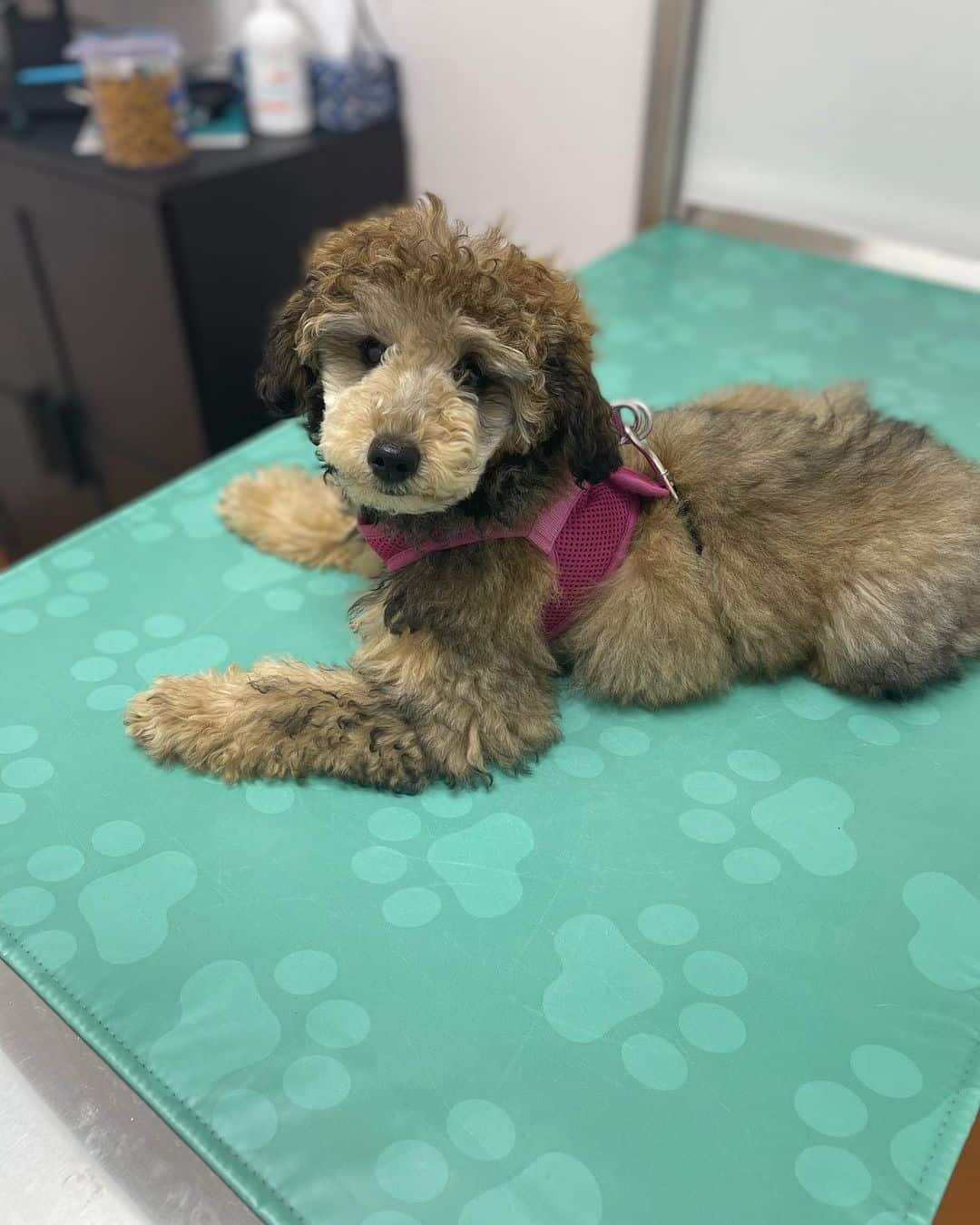
We have already mentioned that this puppy qualifies among the healthiest dogs in the world. This means that your dog probably won’t face any major health issues, especially if you get it from a reputable breeder.
High-quality breeders make sure that all of their puppies undergo regular health exams, bloodline tests, and socialization.
Mental health in a Poodle is as important as its physical health. That’s why the socialization process needs to be continued even after you get the puppy from a breeder.
On the other hand, you need to take care of your Poodle’s feeding chart, especially if your puppy is toy-sized. Avoiding table scraps, junk food, and poor-quality food brands are the best ways to prevent your puppy from becoming obese.
Furthermore, a proper amount of exercise is a must in all Poodle puppies. This is a highly active dog that requires activity at least two times a day. Moderate, thirty-minute walks twice a day are more than enough to keep your puppy mentally balanced and happy.
There are, however, some health issues that are characteristic of large dogs, which might occur in a standard Poodle puppy. Hip dysplasia and bloat are the most common. On the other hand, toy puppies are sometimes prone to progressive retinal atrophy.
1. Hip Dysplasia
Hip dysplasia in dogs represents hip joint loosening, and it mostly happens to large breeds. That means the standard Poodle puppy is most likely to face this condition rather than its miniature and toy counterparts.
Buying a puppy from a reputable breeder will probably reduce the possibility of getting a dog with this condition as quality breeders subject their newborn puppies to hip and elbow evaluation tests.
This is not a fatal issue, but it represents a set of unpleasant symptoms such as bunny walk, along with the inability to run, jump, or even walk properly. Canines with this disorder are often lethargic and lazy as they don’t feel comfortable performing any sort of activity.
Some puppies may feel severe pain in their hip area as the condition worsens.
The recommendation to owners of dogs with hip dysplasia is to not overwhelm them with excessive activities. Also, take care of your puppy’s weight as obese dogs may deal with hip dysplasia harder.
This condition is treatable with physical therapy and a strict feeding chart. However, more severe stages are treated with surgery. The average price of hip dysplasia surgery revolves between $1500 and $3000, which is quite expensive.
The recovery from surgery takes five to eight weeks.
2. Progressive Retinal Atrophy
On the other hand, progressive retinal atrophy in dogs is more related to toy puppies rather than standard or miniature ones. This is a hereditary issue that manifests in cell degeneration in the retina.
Unfortunately, the condition leads to partial or even total blindness in dogs as this is a progressive disease. The most common symptoms are dilated pupils, avoiding dark rooms and dark spaces, inability to go down stairs, and disbalance (or bumping into furniture).
Even though there is no effective treatment in this regard, what you can do is make your puppy’s life as easy as possible. This means that you can add additional lights in your house, avoid surprises, always approach your puppy from the front, and isolate sharp edges.
Puppies with progressive retinal atrophy can also live a completely normal life as they have highly developed senses of smell and hearing. Also, you should always walk your puppy on a leash in public places, and use verbal commands.
That way, you will avoid unpleasant outcomes and potential injuries to your puppy.
3. Bloat
Stomach torsion (popularly known as bloat) is a quite common issue in large dogs. With that being said, there is a higher possibility of a standard-sized Poodle facing this problem rather than miniature and toy ones.
Standard-sized canines have a wider chest, which is a common characteristic of bloat-affected dogs.
Generally, the issue represents the stomach being filled with gas, which causes severe stomach ache and swelling in the stomach area. Other symptoms of bloat are lethargy, lack of movement, loss of appetite, refusing to drink water, panting, and restlessness.
There are several things that you can do in order to prevent bloat in your dog. The first is giving your dog high-quality food. Avoid shady food brands, as well as table scraps. These canines need a properly-designed feeding chart and healthy food.
Furthermore, avoid late meals. Unprocessed food is a frequent cause of bloat in dogs. Never feed your dog less than three hours before bed time.
Additionally, you can try elevating your puppy’s food bowl. The position of the dog’s body while eating can sometimes be the cause of a bloated stomach. Still, if you notice any of the above symptoms, the advice is to see a veterinarian as soon as possible.
Unfortunately, bloat can have deadly repercussions.
FAQs
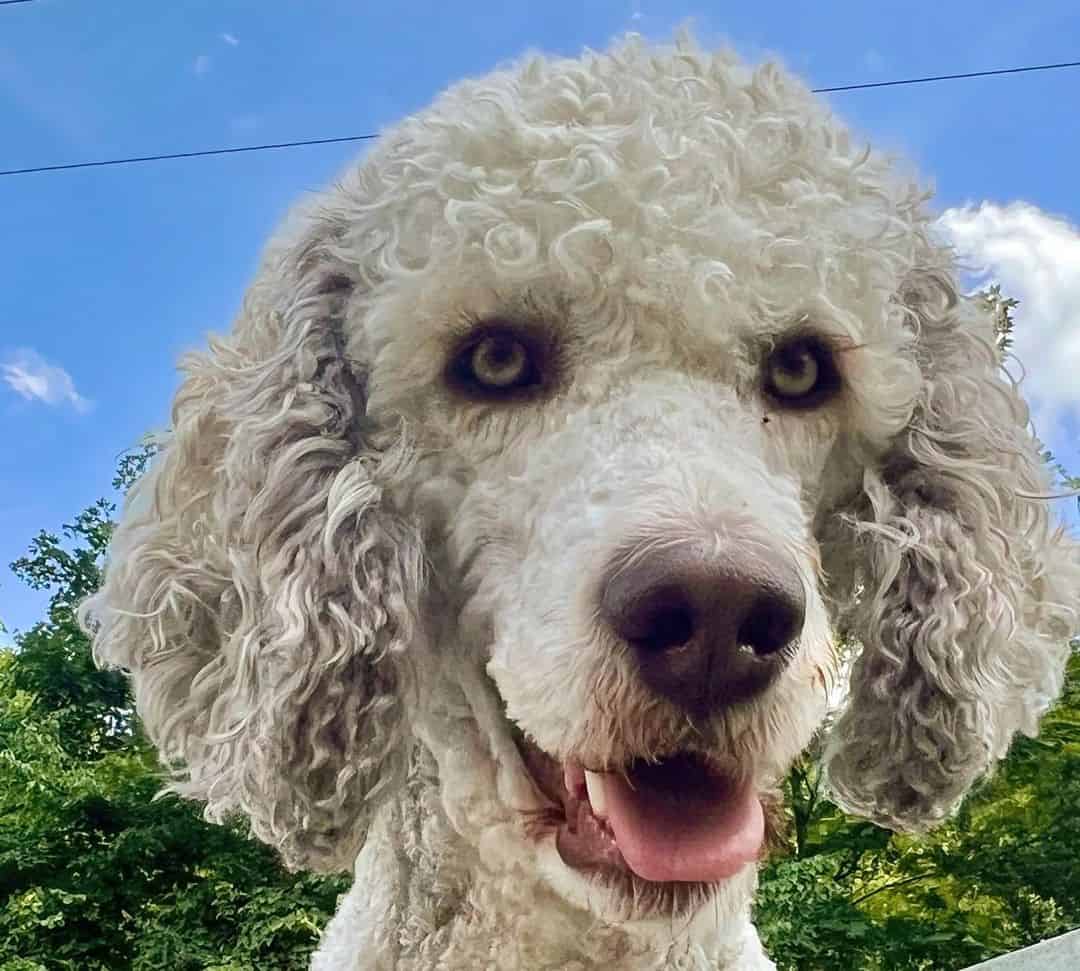
Generally, all sable puppies fade as they grow. Puppies have a dark color during the first several weeks of their life. As they grow, their hair starts to lighten, and their sable pattern eventually disappears.
However, solid-black puppies are not likely to fade over time as black is their standard color. The same goes for white puppies as white Poodles don’t have any color to fade to.
Sometimes, the Poodle’s shedding can be the cause of their faded color. However, there is a low possibility for that as these canines are known to be low-shedders.
There is more than color in these canines. Generally, their standard colors are white, black, brown, cream, cafe au lait, apricot, blue, red, gray, silver, and silver beige.
However, aside from these standard colors, you can find these dogs in at least another 30 patterns, among which, the most popular ones are brindle, brindle parti, tuxedo, and phantom Poodles.
Conclusion
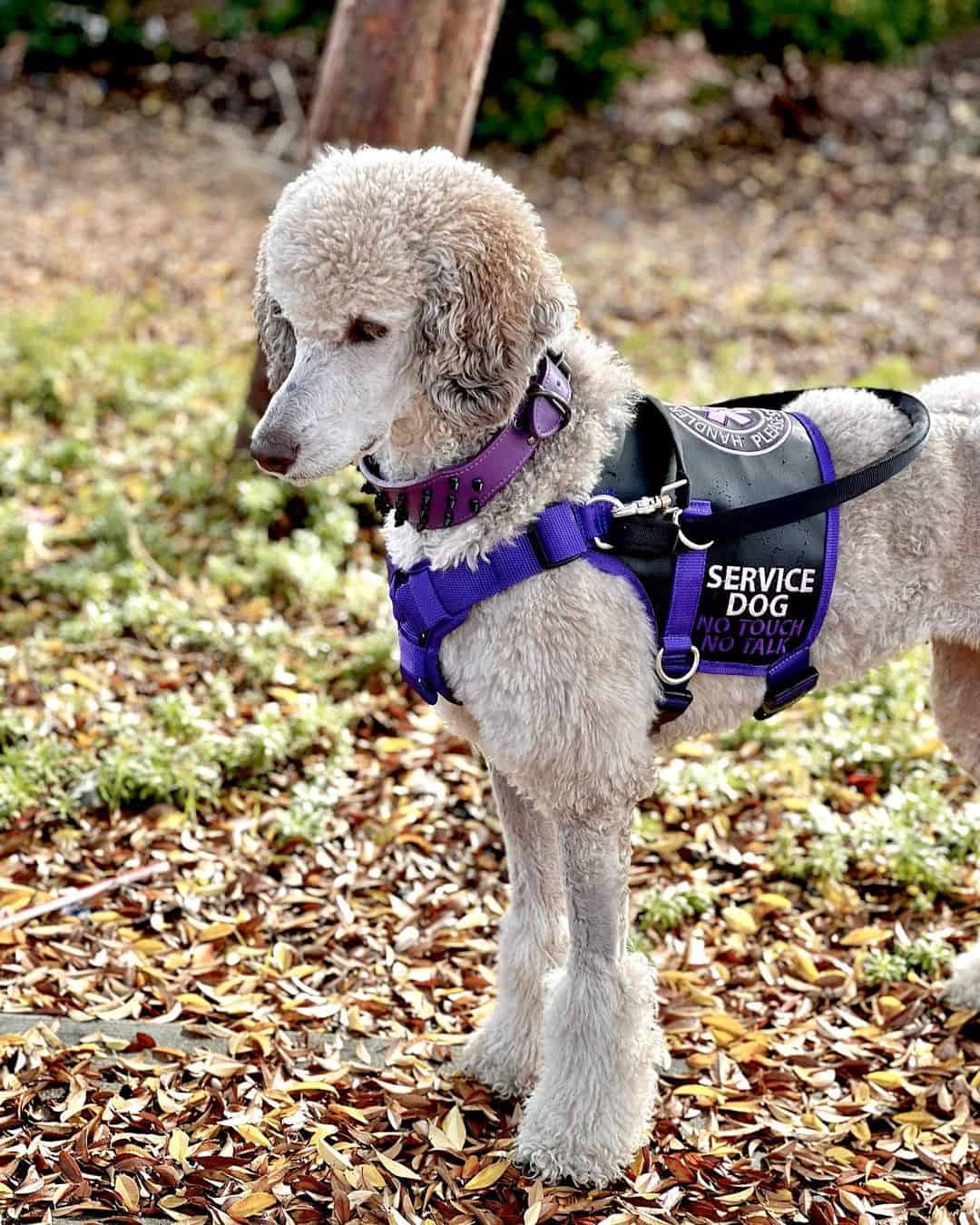
It is not that often that we come across a Sable Poodle puppy. Still, the dog is fairly appreciative as a family pet as it is loving, affectionate, and quite fashionable.
However, purchasing one of these handsome doggies can be tricky. The dog’s AKC disapproval directly affects its representation on the market. In order to buy one, you need to be extremely cautious, and choose only the most reputable breeders.
Read more: Phantom Poodle – The Color And Beyond
